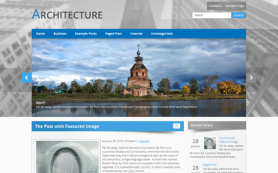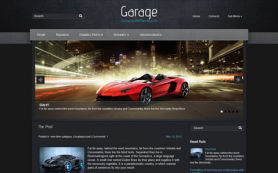With today's digital landscape becoming more and more competitive by the day, optimizing for search engine rankings has gotten more crucial than ever. But, did you know the visuals of your website can play just as big of a role in achieving successful results?
If your site’s been struggling to improve organic traffic or convert visitors into customers, then there’s a huge chance that it has something to do with its aesthetics and functionality. That’s right, web design can actually impact your SEO efforts – it’s not just about including relevant keywords, creating valuable content, and earning quality links from high-authority domains anymore!
In this post, we'll discuss how exactly website design affects SEO, as well as the steps to take to make sure those elements are working together to bring you the most desirable results. Whether you're in charge of a small business website or a larger corporate one, understanding the connection between web design and SEO can play a critical role in taking your brand to the next level.
That being said, here are four web design elements that can have a direct impact on your organic search performance along with tips to optimize each of them:
Navigation Structure
Nothing annoys web visitors more than a site that wastes their time finding the information they’re looking for.
If it takes them over two minutes (or maybe even one) to discover the relevant page or content, they’re more than likely to leave. So, if you you’re seeing a high bounce rate, a poor navigation structure is usually one of the first things to blame.
What does this have to do with SEO, you ask?
Well, for search engines, a high bounce rate means that the website doesn’t meet the needs and expectations of users. It’s an indication that the audience isn’t pleased with the experience the site provides, thus leading crawlers to rank the site low.
Perhaps just as worse is the fact a high bounce rate can shoo your potential customers away. Imagine how many conversions you’ll be missing out on!
So, what can you do to improve your site’s navigation structure? Here are some tips:
- Stick to basic navigation structure. Try not to complicate your website’s navigation with a complex structure. Stick to a simple structure like tabs or dropdown menus instead.
- Visually group related items. Keep all the similar links together for a more organized look and to reduce confusion for the users.
- Provide clear labels to each page so that the users can already identify what is inside without having to click into it first.
- Place your most important links at the top so that users can easily access them.
- Include a search function to make it quicker for your visitors to find what they’re looking for within your website.
- Add a “Back” button in the navigation area so that the users can easily return to the previous page without having to use their browser's back button.
Loading Speed
Most people today no longer have the patience to deal with a slow-loading page. Rather than sticking around for a bit, they find themselves making an exit. That’s why websites that take more than three seconds to load also tend to cause a higher bounce rate.
And, as you already know, high bounce rates hurt search rankings and conversions.
In case you’re wondering, the ideal load time is less than one second. If yours take more (use this tool to determine your site speed), these steps should be able to help:
- Optimize your images. Compressing images can drastically improve page load times. Use an image compressor tool to reduce the size of your photos without losing quality.
- Leverage browser caching. Store static files such as HTML, JavaScript and CSS in a browser’s cache so that it doesn’t have to be reloaded every time the page is visited.
- Use a Content Delivery Network (CDN) to store copies of files on multiple servers in different geographic locations so your website’s content can be loaded from the closest server to the user.
- Deactivate unnecessary plugins and widgets since too many of them can slow down your website’s loading speed.
- Reduce redirects. Every time a redirect is used, it adds extra time to the page load process. That said, try combining URLs or remove unnecessary redirects whenever possible.
Readability
Another way to impress your audience with your website is by providing a pleasant reading experience. Not only will it give them a reason to stay longer, but it will also keep them coming back for more. This will obviously tell search engines that your website deserves a good ranking.
Below are proven tactics to create a fantastic reading experience for everyone visiting your website:
- Use short paragraphs with a maximum of four lines.
- Add images and infographics to illustrate ideas and make pages more visually appealing.
- Make sure all elements are visible by choosing different colors for backgrounds, fonts, and links.
- Keep font sizes consistent across the page and use a larger font size for titles, headings, and important content.
- Use bulleted or numbered lists to make content more organized and easier to read.
- Provide clear instructions for any interactive elements on a page, such as input forms and buttons.
- Optimize each page for all screen sizes.
- Avoid using jargon or complicated language.
Mobile Responsiveness
With millions of people now using their smartphones or tablets to browse the internet, it’s no wonder Google has introduced the mobile-first indexing. Basically, this means that the search engine will use the mobile version of a website to determine its search ranking. The more optimized a site is for mobile devices, the higher it ranks.
If you have yet to renovate your website, don’t be surprised to see its ranking in Google go down. And, if creating a mobile-friendly site is something you know nothing about, allow us to help:
- Start with the mobile-first approach. Begin designing and development your website for the smallest device – the smartphone – and work your way up from there.
- Choose a responsive design to ensure that your website is optimized for all devices. Responsive design uses flexible layouts and images that can adapt to any screen size, which means that everyone will see the same content regardless of the device they’re using.
- Optimize images. See to it that they’re the right size and format to fit on smaller screens without affecting quality.
- Ensure that buttons, links, and other touch points on your website are large enough to be tapped easily with a finger. Aim to make your buttons at least 44px by 44px.
- Utilize typography. Stick to using larger fonts and be sure that there is plenty of contrast between the text and background colors.
- Keep navigation clear and straightforward. Use no more than five main navigation items and consider making them “sticky” so they stay in view when users scroll.
Final Thoughts
Remember, your website is the foundation for all your online marketing efforts. If you want to see real results from your SEO efforts, make sure your web design is up to par.
Keep these tips in mind as you’re redesigning your site or launching a new one. Better yet, hire a reputable agency that offers a custom website design service in West Palm Beach to help you create a stunning and effective website that will set the stage for success in your future digital marketing endeavors.
 Members Area
Members Area




